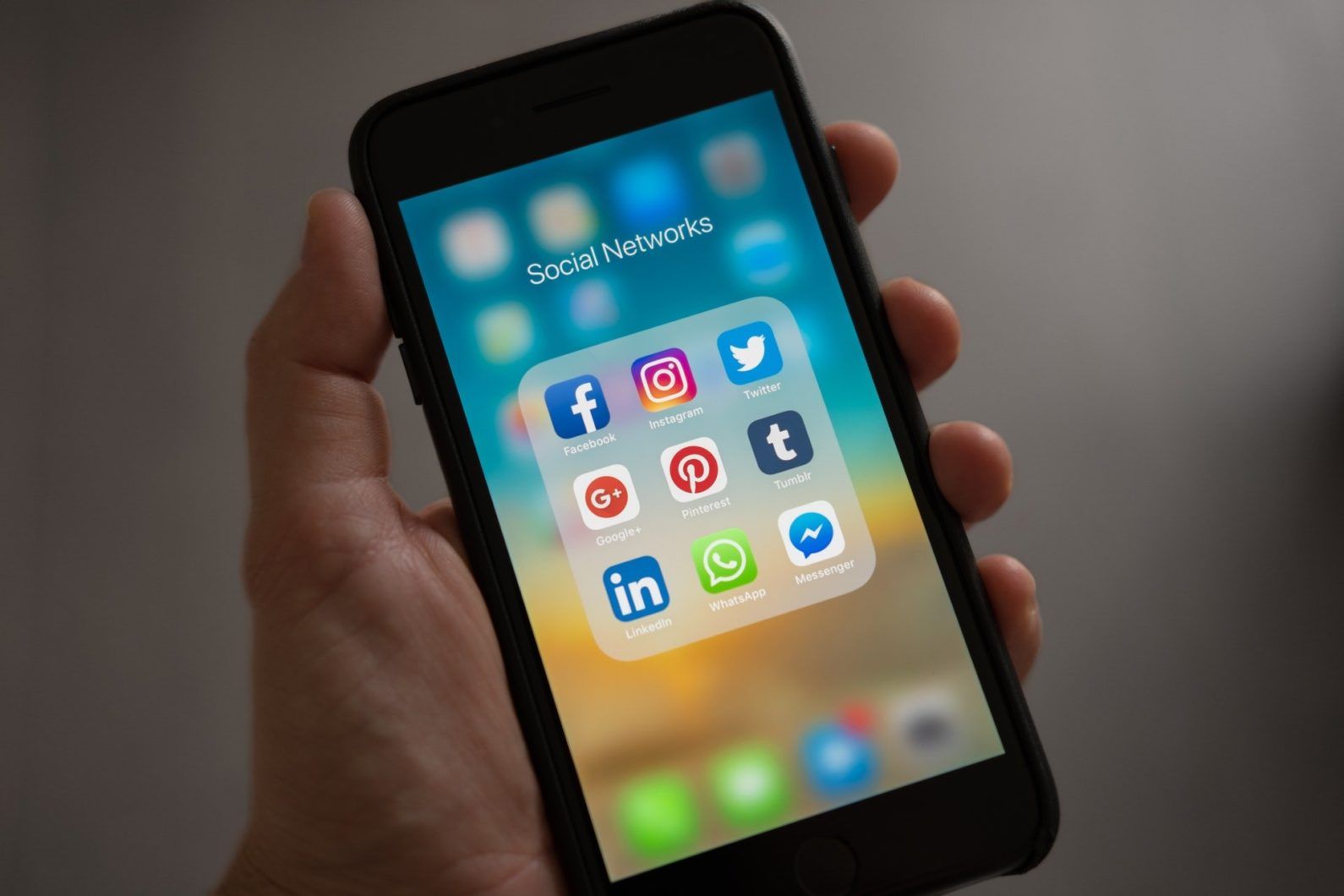In today’s article, I address the possibility of increasing the number of app users via Facebook App Install Ads. There are already numerous articles on how Facebook ads can be used to increase sales or website visitors, but there is not a detailed description of the possibilities of Facebook App Install Ads.
Facebook App Install Ads rank among the most effective and easiest online marketing measures to increase the number of app users. After reading this article, you should understand the approach as well as the requirements for running Facebook App Install Ads.
What are Facebook Mobile App Install Ads?
Facebook Mobile App Install Ads are ads in the advertising system of Facebook and have the purpose to achieve downloads of a mobile app. They are usually characterized by the call-to-action “download” and are displayed exclusively on mobile devices (smartphone & tablet).
The campaign goal can be selected as usual in the Ad Manager under Consideration → App Installations.
Mobile App Install Campaigns vs Mobile App Engagement Campaigns
One important distinction we need to make for the further process is the distinction between Mobile App Install Campaigns and Mobile App Engagement Campaigns. For Mobile App Install Campaigns, the goal is to convince a new customer to download the app and possibly perform a desired action (so-called events). Of course, it also happens that you want to lead existing app users to perform a certain activity in the app (purchase, registration, etc.).
To address already existing app users and lead them to the certain place in the app, one works with so-called Mobile App Engagement Campaigns. To be able to conduct Mobile App Engagement Campaigns, the same conditions apply as for App Install Campaigns, except that additionally a deeplink must be added, which leads to the respective place in the mobile app. Furthermore, Mobile App Engagement Campaigns can not be set up through the campaign goal „App Downloads“, but through App Conversion Campaigns.
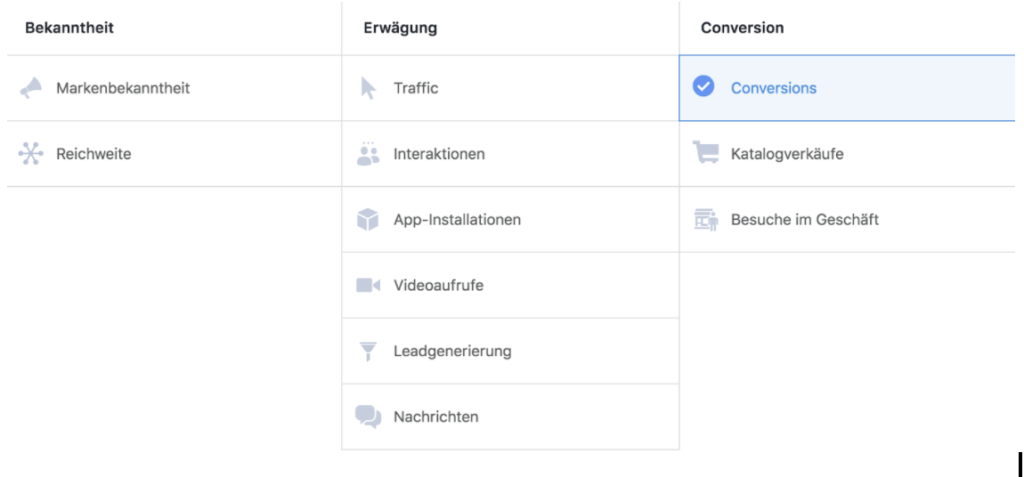
In this article, I will not address Mobile App Engagement Campaigns any longer. It may be the case that I will also describe the topic Mobile App Engagement Campaigns on my blog in the near future.
What requirements must be fulfilled to run Mobile App Install Campaigns?
To advertise your mobile app (IOS & Android) through the Facebook promotion ecosystem, it is required that the Facebook SDK is implemented in the app.
The Facebook SDK allows that usage data and user data are transferred to Facebook. The Facebook SDK can be seen as the equivalent of the Facebook pixel for apps.
Before you can start implementing the Facebook SDK, you must first create a Facebook Developer account. Then you have to register the new app. Only by implementing the Facebook SDK it is possible to use Facebook Analytics afterwards, which provides detailed information about user behavior in the app. A detailed guide to Facebook Analytics can be found here.
In addition to the implementation of the Facebook SDK, it is generally recommended to make use of the standard events for app tracking.
The following standard events are available:
Achieved level
App started
Payment information added
Added to cart
Added to wish list
Registration completed
Tutorial completed
Initial checkout
Purchase
Rated
Search query
Spent credits
Unlocked achievement
Page view
The existing standard events are designed especially for e-commerce and gaming apps, but Facebook prevents no one from using the default events for other apps.
Mobile App Install Campaigns structure and settings
When you create a Mobile App Install Campaign, the app to promote is defined at the ad group level. Here it is also determined for which event the campaign should be optimized.
It is possible to optimize for the following events:
App installation
Link-clicks
App events
Video views
As a general recommendation, it is recommended to optimize for app installs, at least until 50 app installations per ad group have been reached.
Since usually both, an IOS and Android App, should be marketed, a separate ad group must be created for each operating system.
For this reason, a mobile app campaign looks like this:
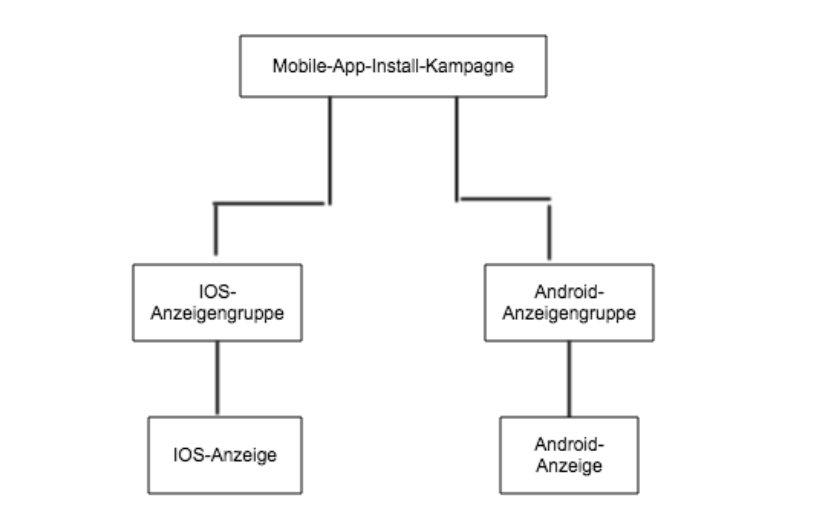
The perfect target audience for Mobile App Install Campaigns
Probably the most important criterion to be successful with a Mobile App Install Campaign is choosing the right target audience. Because only when the app is displayed to the right people, performance KPIs, such as cost-per-install, will sustainably decrease.
In the following, I would like to present my preferred target audience choices:
1. Target audience: Retargeting campaigns based on website visitors:
If you run a website that already has enough monthly visitors (+ 1000 / month), then you can create a website custom audience based on the Facebook pixel, which can be displayed with retargeting campaigns for Mobile App Install Ads afterwards. This type of campaign, in my experience, is a very effective way to generate the first downloads.
2. Target audience: Lookalike audience based on website visitors:
Once a website custom audience has been created, it makes sense to create a lookalike audience from that source audience. This audience is especially recommended for the scaling of app downloads.
3. Target audience: Retargeting campaign based on email newsletter subscribers
You have an email list of people who might like the app? Then it’s a good idea to create a custom audience and address those people using Mobile App Install Ads.
4. Target audience: Lookalike audience based on email newsletter subscribers
After the custom audience of the email newsletter subscribers is created, the next step is to create a lookalike audience to attract more people.
5. Target audience: Lookalike on app installs or other app events
By implementing the Facebook SDK, app activities such as downloads and registrations can be tracked. This also makes it possible to create a custom audience of the users who performed the respective activities. Since these users already use the app, a retargeting campaign is not very helpful. However, we can use this custom audience to create a lookalike audience (LA app install or LA app reg).
6. Target audience: Top 10% of the app users
My absolute favorite audience for Mobile App Install Ads is the top 10% of app users (IOS and Android-separated). In this audience selection, only the app users are included in the custom audience, which are among the top 10% of users who spent the most time in the app. In the next step we can again create a lookalike audience based on the top 10% of the app users. How this works, I’ll show you below:
1. First, we select the audience section in the Facebook Ad Manager. Here we select “Create Audience” → “Custom Audience”.
2. Now we’ll choose app activities as the source.
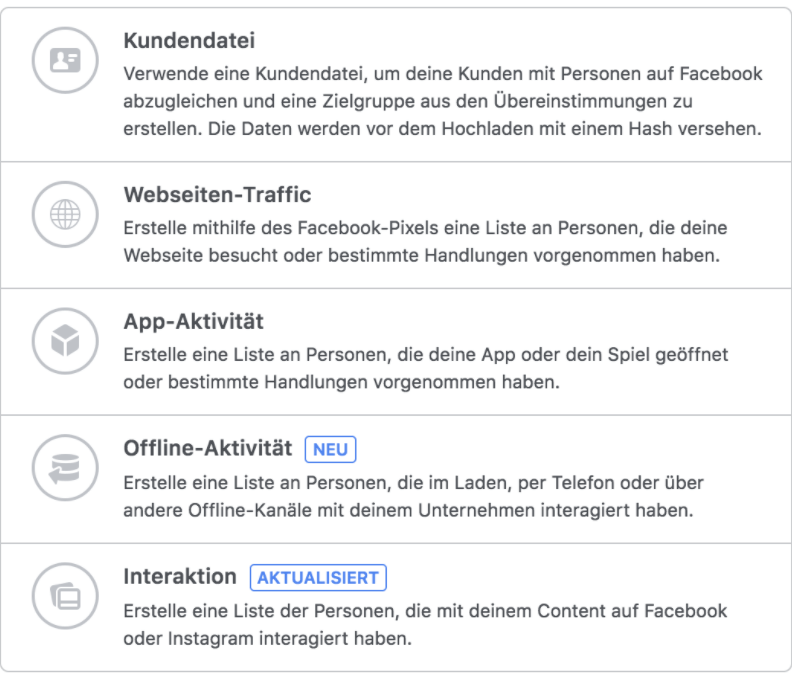
3. Step: Now we select „most active users“ in the drop-down menu and we can now select the respective percentile and the period of user consideration.
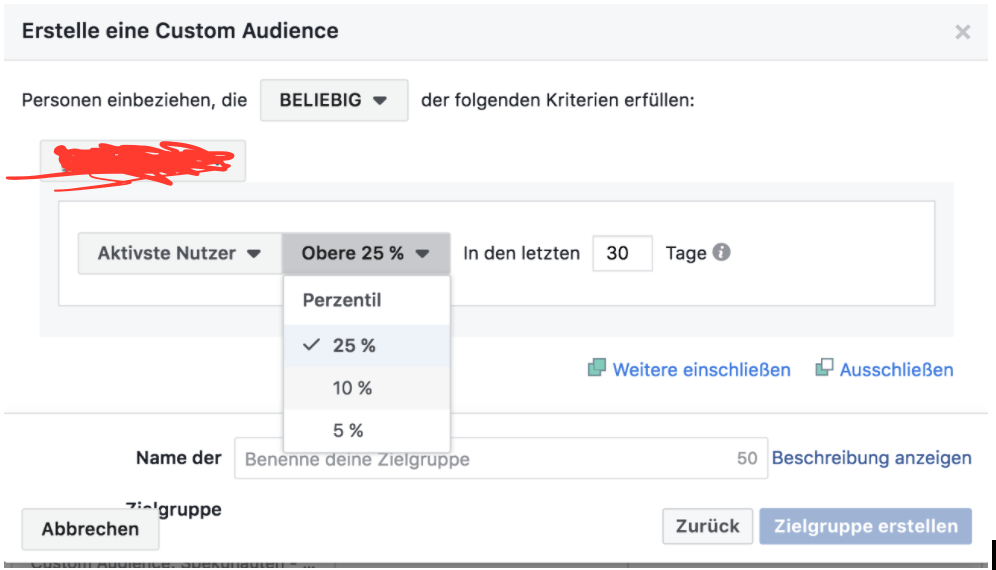
And like this, we’ve already created a custom audience of the most active app users. Now only a fitting lookalike audience has to be created.
Selection of the right ad placement in the Facebook ecosystem
Basically, the placements for Mobile App Install Ads differ only very slightly from conventional campaigns. Only the desktop placements (Desktop news feed & right column) are excluded for Mobile App Install Ads.
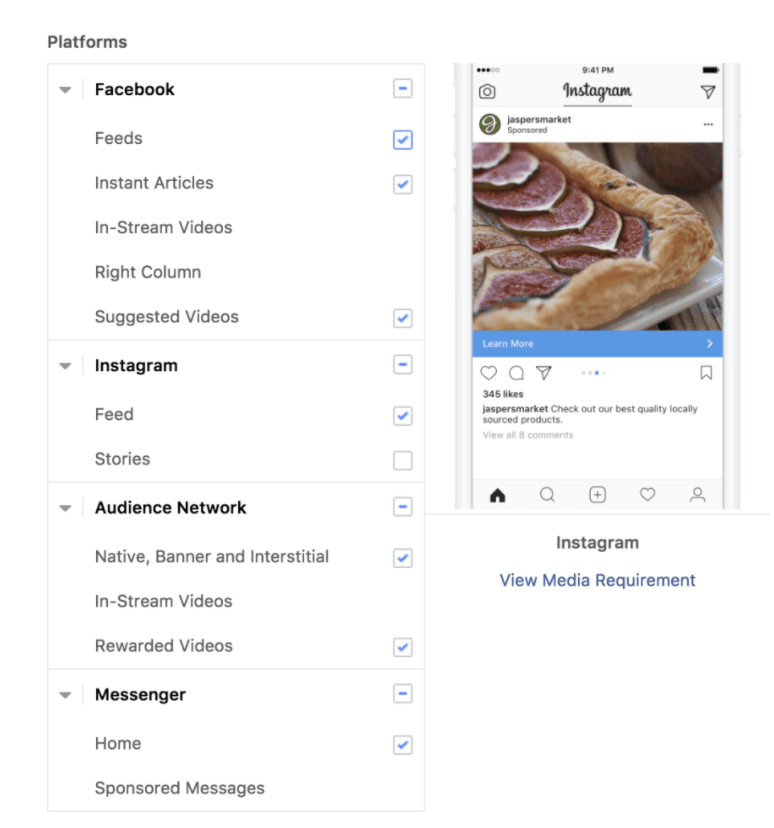
As usual, you also have the choice between „automatic placement“ and „edit placement“. The segmentation by placement is certainly one of the most important and should therefore be monitored in the campaign evaluation analysis.
Mobile App Install Ads ad format
Of course, besides the target audience selection, the design of the ad also plays an important role regarding the success of an app campaign. For app campaigns, the procedure is identical to designing other campaigns (link clicks, conversion, etc.).
On the ad level, you can choose between an image/video and multiple images/videos. The components of a Mobile App Install Ad are the image/video, the text & title and also the call-to-action button, which is specifically designed for app ads.
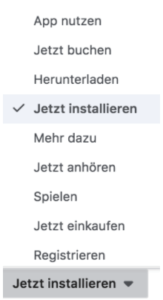
The only difference in the design of Mobile App Install Ads is that the news feed link description is missing. Apart from this, all conventional components can be used for designing the app.
Conclusion:
Running Mobile App Install Ads is not very different to other campaign formats. The biggest difference is that the Facebook SDK needs to be implemented. Furthermore, it can only be said that all assumptions (target audience, placement, creatives) have to be tested in order to find the perfect combination.
[kkstarratings]
